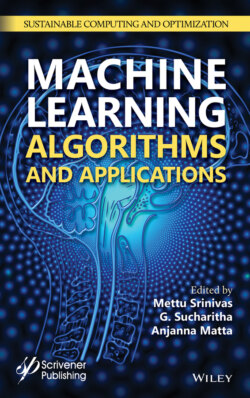Читать книгу Machine Learning Algorithms and Applications - Группа авторов - Страница 20
1.3.1 Proposed Methodology
ОглавлениеOur proposed methodology steps have been discussed as follows:
1. Fetch real-time air quality data through an API of Open Data.
2. Clustering of air quality data based on AQI and assigning classes of air quality from good to severe.
3. Train a Support Vector Machine (SVM) model on the previously clustered data.
4. Train different time series Long Short-Term Memory (LSTM), a Recurrent Neural Network (RNN) model for different places to predict the future air quality of that place based on the previous trend.
5. Assign air quality and AQI to the observed/predicted values of the parameters. AQI is assigned based on the worst 24-hour average of all the parameters.
6. Different visualizations of the past data and future predictions using Heat Maps, Graphs, etc.
7. Compare variations in different parameters contributing toward air pollution at different places.
8. Provide a user-friendly web app to predict and analyze air quality.
Figure 1.1 Workflow of the application.
Figure 1.1 shows the detailed description of the working of the application. The latest data for specific location/place is fetched using Restful API in JSON format from the Open Data Repository. Prediction is also done for the future air quality using the past values. The predicted data is displayed with an adequate message through the web app to the user. Visualization involved displaying the results in human understandable format. For that, Heat Maps were generated and appropriate messages were displayed based on the WHO guidelines. The results were also displayed through graphs to show connectivity between different values. Finally, the outputs were also displayed on the Indian map.
